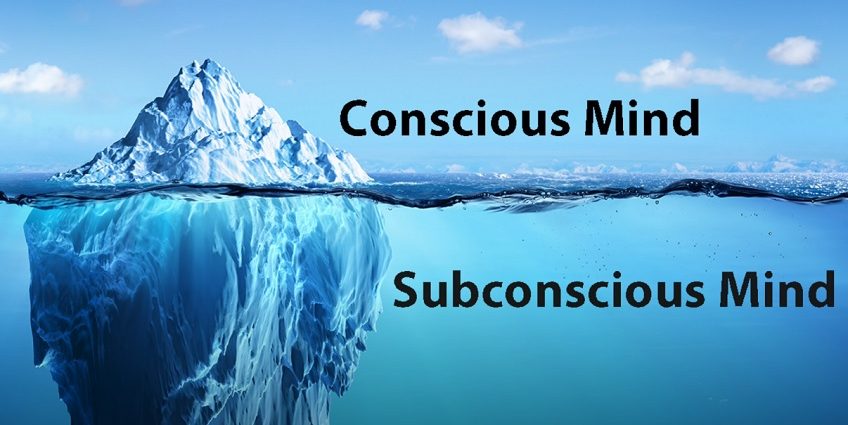According to Caroline Winnett and Andrew Pohlmann of The Nielsen Company, up to 90 percent of purchase choices are done unconsciously. This finding is rather remarkable.
In addition to this, their study shows that while our brains are capable of processing 11 million pieces of sensory information EVERY SINGLE SECOND, our conscious minds are only capable of doing so at a rate of less than one hundred per second.
Does it make sense?
What’s really remarkable is how much of the marketing that’s out there is missing the point due to a lack of knowledge and comprehension of the subconscious mind. There’s a lot of that out there.
As a marketer, you need to keep your attention on three things: your audience, your product, and your message. That is obvious to everyone. But, is that sufficient? Are you extending your marketing efforts as far and as deeply as they should go?
A Pointless Battle Between Branding and Performance Marketing
There has always been a divide between those marketers whose primary emphasis is on performance and those whose primary focus is on branding. However, the evidence is pointing inexorably in the direction of the fact that the intersection of these two subfields of marketing is exactly where you’ll find the sweet spot for marketing in its purest form.
The technique that the performance marketer swears to adhere to is one that involves continuous testing, measurement, and optimization. In addition to that, there is no doubt that this method will provide a boost to the outcomes of your marketing.
But let’s be honest: improving what you already have won’t cut it if the quality of what you already have is subpar. No matter how much optimization you perform, if what you’re optimizing is average, the outcomes of your marketing efforts may increase, but they will never be at their MAXIMUM.
Seeking Marketing Heaven (Nirvana)
You are probably wondering how on how one may get in touch with one’s subconscious in order to get at the holy grail of marketing. The solution is so straightforward that it’s staring you in the face…
Bring them to tears! You don’t always have to “make them weep;” sometimes you need to make them laugh, get them thrilled, or just make them feel protected. The gist of it is as follows:
EVERY purchasing decision is influenced by emotion!
Therefore, if you want to get the most out of your marketing, it is essential for it to elicit an emotional reaction in the minds and hearts of the potential customers you are targeting. This does not imply that you are required to tell jokes or include images of cute animals into all of your marketing.
You should rather concentrate on providing your audience with a multisensory experience. If your marketing campaign generates a wider variety of sensory effects, then there is a better possibility that you will be able to connect with your target audience on a more profound level.
Research conducted at the University of Loyola in Maryland found that the use of color led to an astounding 80 percentage point boost in brand awareness. How much effort do you spend trying to get the colors in your advertisement just right?
The color yellow is known to evoke feelings of joy, optimism, and friendliness while also drawing attention to itself. And precisely because of this, McDonald’s, Hertz, Nikon, Best Buy, and IKEA make considerable use of the hue in their marketing.
Without our conscious knowledge, shapes move us. This is the reason why companies like Apple and Coca-Cola have concentrated so efficiently on rounded designs.
The effectiveness of messaging is comparable. The company Salesforce made its name known with the straightforward but audacious concept of “No Software.” They maybe might have centered their attention on “Software on the Cloud” or “No Installation Required,” but these are uninteresting selling points in comparison.
However, Nike’s slogan “Just Do It” is much more effective despite the fact that it makes no reference to the craftsmanship or components of the shoes that the company is marketing.
Another emotional trigger is monetary value. When Olay tested its products at a variety of pricing points, the company discovered that its sales were at their best when they were priced very high, but that they were a dismal failure when they were priced in the middle of the road.
The high price point worked quite well, even when compared to the cheap discount price. Consumers experienced a potent emotional cocktail consisting of pride, confidence, and enjoyment as a direct result of the high price point, which projected a premium product experience.
The software startup Wave Accounting takes the normally dry subject of accounting software and transforms it into a delicious “experience” by putting an emphasis on aesthetics and design in its products.
Another good example is the environment. We went above and beyond the construction of a new identity, logo, website, and marketing material for one of our customers here at Digital Marketing NOW, for whom we carried out a full rebranding, and rebuilt their office lobbies as well. This was done as part of the process.
We built a new lobby that was trendy, bold, and vivid to match the identity of our client, who was centered on being the innovation leader in their sector. This lobby invigorated anybody who passed through the door. When was the last time you gave your lobby the same amount of attention that you give your landing pages?
Conclusion
However, considering that 90 percent of purchasing decisions are made unconsciously and that our brains process 11 million bits of sensory information every single second, it is time to begin aiming our marketing efforts directly at the subconscious, regardless of whether the target audience is site visitors or office visitors.



